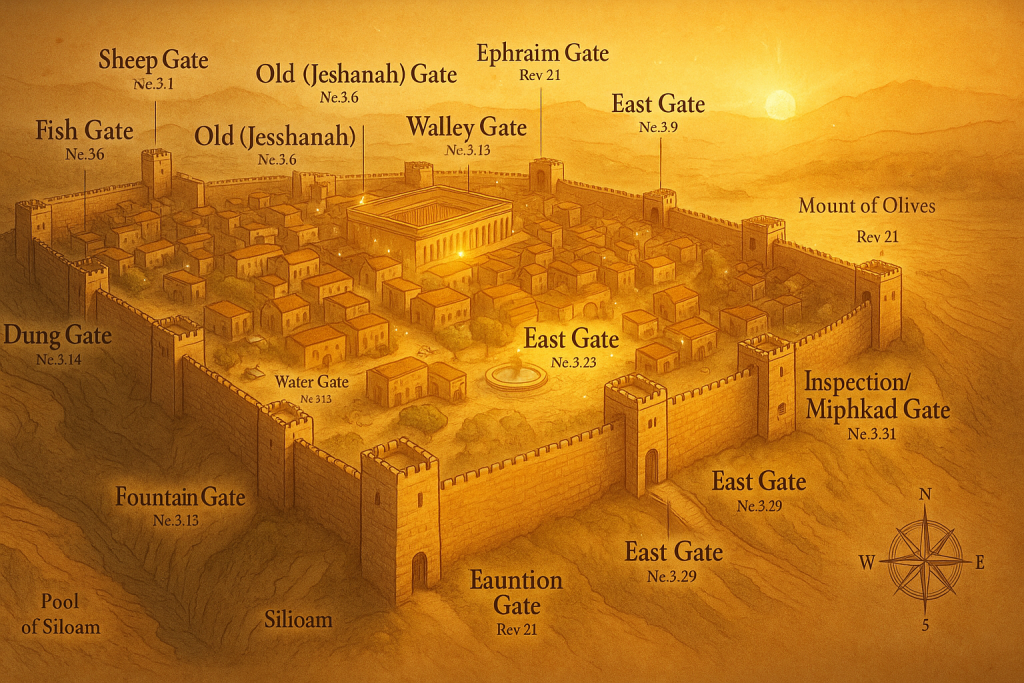Seeing a praying mantis often stops us in our tracks. The insect’s stillness, joined forelegs, and patient focus naturally invite spiritual reflection. Yet, to begin with clarity, Scripture does not mention the mantis by name. Therefore, the biblical meaning of seeing a praying mantis does not come from a specific verse but from wise, responsible application of biblical principles to a common experience in creation.

Even so, Christians have long used elements of nature as reminders of spiritual habits. In that light, the mantis can serve as a helpful metaphor for prayer, attentiveness, and discernment. Its posture resembles intercession; its hunting style requires quiet focus; its presence in a busy space can nudge us to pause. Consequently, the question many readers ask what does it mean when a praying mantis visits you is best answered like this: it may not be a divine “sign” with a fixed message, but it can be a timely prompt to seek God with a calm heart and a clear mind.
From a biblical perspective, creation declares God’s glory and invites gratitude. However, wisdom also guards us from turning symbols into oracles. Thus, the most balanced approach treats a mantis encounter as a practical cue: slow down, pray, and pay attention to what Scripture already reveals. In other words, let the moment sharpen your focus rather than replace biblical guidance.
Finally, this framing sets the tone for the rest of the article: we will distinguish cultural symbolism from biblical teaching, honor the beauty of God’s world, and keep Scripture central as we explore how an everyday encounter can encourage a life of steady prayer and thoughtful awareness.
What Does it Mean When a Praying Mantis Visits You
First, clarity helps: a mantis in your path is not a biblical omen. Scripture doesn’t present animals or chance encounters as coded messages that override God’s revealed will. Instead, moments like these can function as gentle prompts toward practices we already know are wise. In that sense, the biblical meaning of seeing a praying mantis is best understood as a reminder, not a prediction.
So, what does it mean when a praying mantis visits you? Consider a simple, non mystical reading: let it nudge you to pause, pray, and seek wisdom. James 1:5 encourages believers to ask God for wisdom with confidence. That’s a grounded next step not superstition, not anxiety, and certainly not moralistic pressure.
Here’s a practical way to respond:
- Pause: Slow your breathing and quiet your thoughts.
- Pray: Thank God for the beauty of creation; ask for a focused heart.
- Seek wisdom (James 1:5): Bring your current decisions before the Lord.
- Discern, don’t divine: Weigh options through Scripture, conscience, and counsel without treating the mantis like an oracle.
- Act with peace: Move forward in humility and trust, rather than hunting for hidden signs.
This approach keeps Scripture central, honors the goodness of the world God made, and protects you from chasing presságios those “omens” that promise certainty but rarely deliver peace. A quiet insect cannot decode your future, yet it can remind you to cultivate a quiet spirit before God today.
Read also our article about:
Biblical Meaning of Dreams.
Biblical Meaning For Numbers.
Symbolism and the prayer posture: what is cultural and what is biblical
The mantis looks like it has “hands folded” in prayer, which explains why many people connect it with devotion and stillness. However, the Bible does not name the insect, and it does not assign a fixed spiritual value to specific animal poses. Consequently, the biblical meaning of seeing a praying mantis does not come from a verse about the mantis itself; it arises from how Christians wisely apply Scripture to everyday life.
Culturally, the folded-foreleg stance suggests contemplation and focus. Artists and writers have used that image to illustrate the inner posture of prayer: quiet attention before God. Biblically, though, prayer is defined not by a hand position but by the heart humble, trusting, and sincere. We see believers praying while standing, kneeling, sitting, or lying down. Therefore, the mantis can serve as a helpful symbol, yet it remains a symbol, not a rule.
So, what does it mean when a praying mantis visits you in this symbolic sense? At most, treat it as a cue to practice things Scripture already commends. For balanced devotional use, consider:
- Pause and refocus: Let the sight remind you to slow down and become attentive to God’s presence.
- Offer brief prayer: Thank God for His creation and ask for a steady mind and a guarded tongue.
- Practice watchfulness: Like the mantis, choose focus over frenzy reduce distractions to listen well (to God and to people).
- Pair symbol with Scripture: Anchor the moment in a verse you already know (for example, wisdom from James 1:5) rather than inventing hidden messages.
- Return to ordinary faithfulness: After praying, resume your responsibilities with patience and peace.
In short, the mantis can be a culturally meaningful picture of prayerful attention, but biblical substance comes from Scripture itself. Use the symbol to remember what God has revealed, not to replace it.
How to interpret responsibly: Scripture first, then experience
When it comes to the biblical meaning of seeing a praying mantis, wisdom begins with Scripture and only then considers personal impressions. Experiences can be meaningful, but they are safest and most fruitful when they are tested, refined, and submitted to God’s revealed truth. With that in mind, follow this simple, pastoral framework.
1) Start with what the Bible clearly teaches.
Before attaching significance to any moment, revisit core truths: God is sovereign, gracious, and wise; He guides through His Word, prayer, and godly counsel. Because the Bible doesn’t mention the mantis, avoid building doctrines from silence.
2) Name the experience without exaggeration.
Describe what actually happened I saw a praying mantis on my windowsill instead of leaping to conclusions. Clarity reduces anxiety and keeps your heart grounded.
3) Avoid divination and superstition.
Resist the urge to treat the insect like an omen or code. God’s guidance never asks you to decode secret signals. He leads through principles already revealed, not through presságios.
4) Pray for wisdom and a calm heart.
Ask God for clarity, courage, and peace (see James 1:5). A brief, honest prayer is better than chasing hidden meanings. Let the moment prompt communion with God, not fear.
5) Weigh the impression by Scripture.
If the encounter nudges you toward patience, gratitude, or attentiveness, that aligns with biblical virtues. If it pressures you into rash decisions, formulaic rituals, or fear-based control, set it aside.
6) Seek wise counsel when decisions are weighty.
Bring your thoughts to mature believers or a pastor. Wise voices help you separate conviction from impulse, and application from speculation.
7) Act on what is clear; release what is not.
Practice what you already know pray, give thanks, and do the next faithful thing. Leave the rest with God. Obedience today matters more than deciphering tomorrow.
8) Return to ordinary faithfulness.
Let the symbol serve the substance: prayer, Scripture, community, and integrity. As a result, even curious moments become catalysts for steady growth rather than quests for hidden messages.
In short, if you’re wondering what does it mean when a praying mantis visits you, the most responsible answer is modest and hopeful: it may simply be a timely reminder to slow down, pray, and seek wisdom always with Scripture leading the way.
Read also our article about: Biblical Meaning of a Whale in a Dream.
Beware of “omens”: biblical limits for signs and divination
When people search for the biblical meaning of seeing a praying mantis, they sometimes slip into omen hunting turning a natural encounter into an oracle. That instinct is understandable; uncertainty makes us crave certainty. However, Scripture consistently directs believers away from divination and toward wisdom grounded in God’s Word. Therefore, rather than asking the mantis to speak, we let the Bible speak and allow the moment to remind us of what we already know to do.
Practically, this means drawing a clear line between symbolism and superstition. Symbols can serve memory and devotion; superstition tries to control the future. If you’re wondering what does it mean when a praying mantis visits you, keep the response simple and faithful: pause, pray, and seek wisdom without assigning a secret code to the insect or to the timing of the encounter.
Here is a pastoral checklist to keep your heart steady:
- Refuse the oracle mindset: God’s guidance does not depend on decoding “signs.” He leads through Scripture, prayer, and wise counsel.
- Test the fruit: Does your interpretation produce peace, humility, patience, and love? Or does it generate fear, compulsion, and magical thinking? Follow the fruit that reflects Christlike character.
- Prefer principles over predictions: Apply clear biblical principles to your real decisions today instead of predicting outcomes from unusual moments.
- Anchor your conscience: A brief prayer for wisdom (James 1:5) outperforms endless speculation.
- Close the loop with action: After praying, take the next faithful step you already know is right.
In short, let creation inspire gratitude and attentiveness, not divination. The mantis can cue you to slow down and pray, but only God’s Word carries the authority to direct your steps.
Practical applications: pause, pray, observe, and act with wisdom
To keep the biblical meaning of seeing a praying mantis grounded and helpful, turn the moment into simple practices that shape your heart. Instead of chasing secret messages, translate the encounter into silence, gratitude, service, and humility. In other words, when you wonder what does it mean when a praying mantis visits you, let it become a cue for faithful action.
Read also our article about: Biblical Meaning of 1222.
A quick, pastoral checklist
- Pause (silence):
Stop for sixty seconds. Breathe slowly. Let the noise settle so your thoughts can align with God’s truth instead of anxiety. - Pray (focus):
Offer a short prayer: “Lord, give me wisdom and a calm heart.” Keep it honest and direct no formulas needed. - Observe (attention):
Notice what’s around you people, responsibilities, limits, opportunities. Ask, “What good can I do right here, right now?” - Give thanks (gratitude):
Name three specific gifts from the last 24 hours. Gratitude disarms fear and turns a curious sighting into worship. - Examine your heart (humility):
Check your motives. Are you seeking control through omens, or seeking God through trust? Choose trust. - Seek wise counsel (community):
If a decision is heavy, share it with a mature believer or pastor. Wisdom grows in conversation, not isolation. - Serve someone today (service):
Do one small act of love a message of encouragement, an apology, a practical help. Symbols find meaning in service. - Simplify your next step (clarity):
Reduce the day to one faithful action you can complete in the next hour. Faithfulness beats speculation. - Return to Scripture (alignment):
Read a short passage and carry one phrase with you through the day. Let God’s Word steer your reactions. - Review at night (formation):
Before bed, ask: Where did I sense God’s peace? Where did I resist? Thank Him, then plan one faithful action for tomorrow.
Used this way, the mantis becomes a timely reminder not an oracle to cultivate a quiet spirit, steady prayer, thoughtful awareness, and loving action. That is where moments turn into growth.


